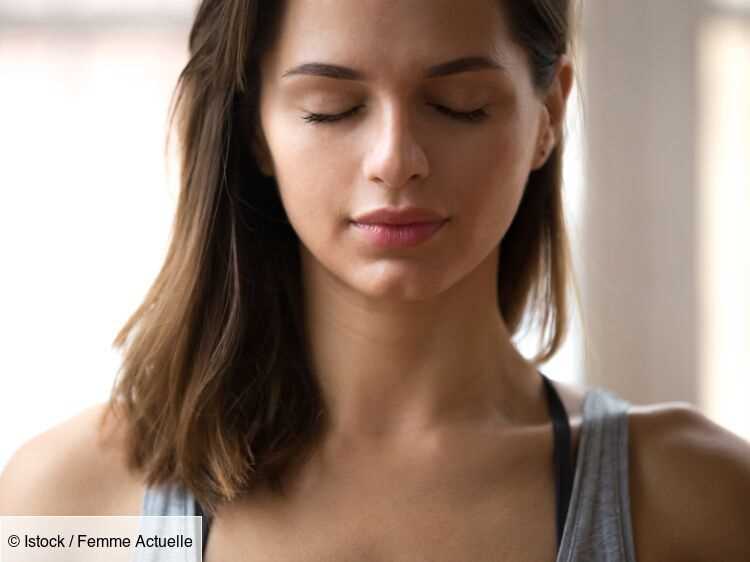Spirotherapy, also known as breath therapy, is a therapeutic science of wellness that uses controlled, mindful breathing to soothe both physically and mentally.
Spirotherapy: what does this wellness method consist of?
Breathing exercises
Imagined by Samuel Ganes, spirotherapist, this gentle method, which is for everyone, comes from the culture of yoga, but not only.
The sessions combine pranayama exercises, cardiac coherence, breathing techniques developed to warm the body in the cold (Wim Hof method) …
During a spirotherapy session, you are generally seated, but in some cases you can also be lying down, or even standing. We will associate breathing (diaphragmatic breathing, breathing in movement, meditative breathing…), with movements (with mudras for example, yoga of the fingers).
Good hygiene in the ENT sphere
Spirotherapy also includes lifestyle reflexes such as nasal showers in the morning, brushing the tongue, etc. The cleaning of the ENT system is, indeed, important in this therapy by the breath, because "in ayurveda, the nose and the mouth, are the main gateways to the metabolism. If this part is clean, the rest follows. It is therefore important to clean these channels regularly so that they do not become dirty ", explains Samuel Ganes.
Contraindications to know
While breath therapy is a method open to all, it has multiple benefits for the body and mind, and certain contraindications should be known. In case of surgery on the respiratory system, or on the stomach (you work a lot with the diaphragm), always seek the advice of a doctor.
Also, pregnant women, especially during the first months of pregnancy will have to wait a little before starting.
Breathing exercises: the benefits of spirotherapy
The regular practice of spirotherapy, and the performance of breathing exercises make it possible to permanently change your metabolism, as Samuel Ganes assures us.
Gain vitality in the morning, relax in the evening
Breath therapy offers different possibilities: in the morning, the practice will allow you to wake up, invigorate the body and the mind, to start the day on the right foot and in good shape, and in the evening on the contrary, certain exercises will help to relax, soothe internal or physical tensions, and will allow you to sleep better.
Improve the cardiovascular system
The respiratory system is connected to the cardiovascular system: breathing slowly therefore improves cardiovascular functions, and with regularity, this can increase life expectancy, assures the spirotherapist.
Reduce stress
Breathing exercises will have a direct impact on stress levels: conscious breathing will soothe the nervous system at any time of the day. Addictions linked to stress, anxiety, such as in some cases alcohol, sugar, screens, will also be soothed thanks to this gentle practice.
Improve intestinal transit
Diaphragmatic breathing, which as its name suggests takes place at the level of the diaphragm is excellent for intestinal transit: the breath that enters and leaves will offer a vigorous massage of the digestive system, and will thus stimulate digestion …
Detoxify by exhaling
Spirotherapy also helps "detoxify" the body. Simply, with deep breaths, we will raise the level of oxygen in the blood, and lower the level of carbon dioxide.
"We often have a tendency to be under-breathing, not to exhale enough… The deep and controlled breaths will come and restore this imbalance", explains the therapist.
In general, spirotherapy, practiced regularly, ideally daily, will help to keep in shape, improve the quality of sleep, strengthen the immune system and boost the mind …
Spirotherapy: 2 breathing exercises to start at home
These two simple and accessible exercises that Samuel Ganes offers during his spirotherapy sessions will help to regulate imbalances in the body: the oxygen level will rise and the carbon dioxide level will fall.
The right posture to perform these breathing exercises:
- Get comfortable, sitting on the floor or on a chair (avoiding leaning against the back of the chair).
- Keep the pelvis straight (don't do a retroversion), and stay straight.
- The shoulders are lowered and slightly back.
- The jaw is parallel to the ground, the neck and back are aligned.
- Ideally, keep your eyes closed during practice, for more concentration.
- Choose a quiet place, without music, to practice in silence and listen to your breathing.
Sama vritti
Sama vritti, commonly known as square breathing, is breathing in four phases, all of which are identical in time. So, to begin with, we will:
- Breathe in through the nose over 4 beats
- Retention, lungs full, over 4 strokes
- Breathe out through the nose (or mouth), over 4 steps
- Retention, empty lungs, over 4 strokes
A sequence to be done 3 times in a row, in consciousness, observing your breathing, and "exploring each of the 4 phases".
Good advice: we can gradually increase, over practice, the time of each phase, making sure to always keep the same time: we can try on 5 beats, then 6 …
Vishama vritti
This breathing exercise, "vishama vritti", takes the same phases as square breathing (inspiration, retention, expiration, retention), but the times are different, since the expiration time is doubled.
This gives, for example:
- Breathe in through the nose over 4 beats
- Retention, lungs full, for 8 beats
- Exhale through the nose (or mouth), over 8 beats
- Retention, empty lungs, for 8 beats
The idea of this exercise is to accentuate the expiration as much as possible (we will then be able to switch to 5 inspiration times for 10 expiration times, then to 6 inspiration times for 12 expiration times … )
More complicated at first than square breathing, this exercise will become easier with practice, as things unblock, and we move towards a form of active meditation.
Thanks to Samuel Ganes, spirotherapist (www.samuelganes.org), which offers spirotherapy sessions with Neoness (www.neoness.fr). Also on Instagram @samuelyogiganes
Read also :
⋙ Stress, fatigue, anxiety: the ideal program to boost morale at home
⋙ Sport at home: 8 exercises that make you lose weight to do without equipment
⋙ 6 tips to fight fatigue
